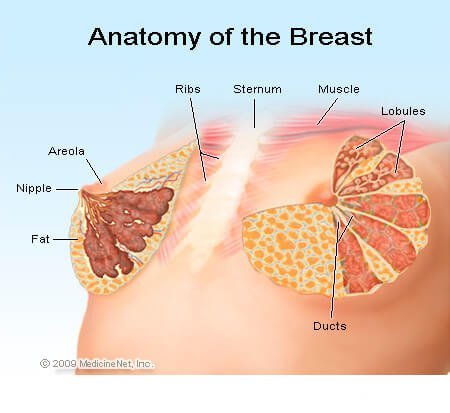
When it comes to fibrocystic breast disease, there are various signs and symptoms of the disease that you should be aware of. It is important to be able to identify these signs and symptoms so that you can determine if you have developed this type of illness or not.
Breast fibrocytic changes are abnormal changes in the texture, shape, or size of the breast that occur over time. The most common types of fibrocystic breast changes are:
The chest is smooth or rough (or inelastic). These are usually smooth, firm breasts with no clear border around the nipples. In this type of breast condition, pain and discomfort usually starts on the upper side of the chest and slowly spreads to the lower sides.
Non-plastic or normal breast size. Normal breast size is determined by the ratio of breast to body size. If your breasts are oversized, you are most likely suffering from this breast condition.
Breast skin may look flaky and thickened. This condition can even cause bleeding. Bleeding in the chest can also signal bleeding in other parts of the body. You may also experience pain during breastfeeding or after childbirth. This is one of the symptoms of breast fibroids.
Breast tenderness or soreness when breastfeeding is another sign of fibroid cancer. During breastfeeding, you will feel sharp pain in your breasts or lower breasts. Your baby's nipples will also become sore and sensitive to touch. You may also experience pain during or after feeding. When you have breastfeeding problems or during childbirth, this is a sign that you may be suffering from this condition.
When you have pain while feeding or during the delivery process, it is a good sign that you have fibrocystic. in your breast tissue. Breast tenderness is also one symptom of fibrocystic breast disease.
In addition, if your breast pain is severe, you should talk to your doctor or OB/GYN about it. They can order tests like a mammogram and ultrasound to find out more about your condition. This type of exam will tell your doctor if your condition is indeed fibroid breast disease.

Other symptoms include pain during bowel movements, backache, difficulty breathing and bloating
These symptoms can also be associated with other conditions like endometriosis or uterine fibroids.
Early stages are not always easy to detect. It is important to see your doctor regularly to monitor your condition. Your doctor can perform tests to diagnose and treat this condition.
Some of the symptoms you should look out for include those mentioned above. Even if the symptoms are not all present, it is still a good idea to consult your doctor. Since fibrocysts often grow rapidly, early detection will help you manage the condition better.
Doctor's advice is very important. You can ask your doctor if you can start using a natural treatment. or surgery.
You can also talk with your doctor about a natural treatment that may help reduce or eliminate the symptoms. Surgery might be recommended in the first stage, but it should be avoided unless absolutely necessary.
A lot of women don't like the idea of undergoing any treatment, including surgery, because they fear that they will get worse. But doctors recommend that natural treatment be tried for the first two to three years. Natural treatment is safer and more effective.
Another natural treatments to help treat fibrocystic breast disease are the herbs. There are various herbs that can be used to reduce the pain and inflammation that are associated with fibrocystic breast disease. These herbs are called aromatherapy.
There are many books and other resources available on natural remedies for fibrocystic breast disease. You can use these resources to learn more about this condition. and find out more about how to treat and prevent it.
